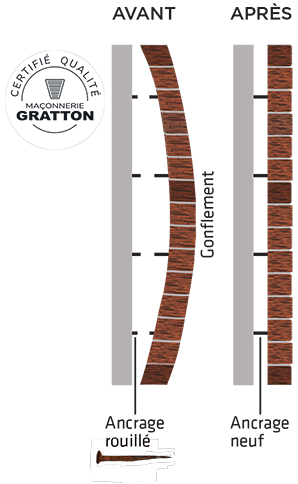CAUSES
A belly-beef can be caused by several factors:
- excess moisture in the basement,
- deterioration of the mortar and joints,
- temperature change,
- excess rust on anchors,
- cracks, etc.
When you see that a brick or stone wall presents this kind of problem, it is better to act quickly.
CONSEQUENCES
The belly-beef designates a swelling on the outside of a brick wall. The deterioration of the brick, mortar and anchors leads to the removal of the brick wall from the wooden structure giving the wall a domed appearance. This problem can cause enormous damage, including the collapse of the brick wall.
SOLUTION
Long term: The most durable and effective solution is to completely dismantle the problem area over the entire width. The wall is then reassembled with new galvanized anchors and new mortar.
Short term: Support plates can be installed which will be screwed directly into the wooden structure. These will stop the progression of the belly-beef. It is a temporary preventive solution of approximately 1 year.
TO NOTE
It is sometimes recommended to redo the entire wall since it could have been weakened by the belly-beef. The repair of a complete wall also has the advantage of allowing the addition of insulation.






